#basic components of android application
Explore tagged Tumblr posts
Text
Is vSeeBox legal? | vSeebox Official Team
Yes, vSeeBox is legal in the US. As streaming technology continues to evolve, devices like the vSeeBox have become increasingly popular among consumers looking for enhanced entertainment options. However, with this rise in popularity comes questions about the legality of such devices. In the following discussion I will explain why vSeeBox is legal by taking you through what vSeeBox is, the relevant legal policies, an in-depth look at the product, and much more!
Understanding vSeeBox
vSeeBox is an Android TV box designed as an open entertainment platform, providing users with access to a wide range of applications available through the Google Play Store and other sources on the internet. While it offers a plethora of features for streaming content, the key aspect to consider is how the device is used by consumers.
The Legal Framework
Device Legality: In itself, owning and using a vSeeBox is entirely legal in the US and many other countries. The device functions similarly to a smartphone or computer, providing a platform for accessing content legally available online.
Content Responsibility: It’s crucial to understand that while the vSeeBox is legal, the responsibility for accessing content rests with the user. Users must ensure that they have the proper licenses or subscriptions for any content they stream. This means that accessing paid channels or content without a subscription could lead to legal issues, as it constitutes copyright infringement.
Open Platform Nature: The vSeeBox is essentially an empty platform that allows users to download and use applications at their discretion. The vSeeBox company is clear that it does not endorse or support the illegal streaming of copyrighted content and advises users to adhere to copyright laws.
What Users Should Do?
To stay within legal boundaries, vSeeBox users should:
Use Legitimate Sources:Only stream content from legitimate and licensed providers. This includes subscribing to services like Netflix, Amazon Prime, and others that offer legal access to media.
Respect Copyright Laws: Always ensure that any media accessed through the vSeeBox complies with copyright laws to avoid legal repercussions.
Stay Informed: Keep informed about the content you are accessing and make sure that it is being provided legally.
What is an IPTV Box?
An IPTV Box is a type of set-top box that can convert internet protocol signals into a format that can be read and interpreted by your TV. It is important because your TV does not have any built-in system to interpret the signals received via the Internet. Thus, these IPTV Boxes play a crucial role in this process, as they act as a bridge between your TV and the internet.
They connect to your TV through HDMI or AV Cables. In recent years, some IPTV boxes have got the capability to connect over the wifi. So, if you have a smart or connected TV that can connect through wifi, you won’t need anything else to connect to your IPTV box.
What is an Android Box?
Android boxes are a sub-category of IPTV boxes, In the US, the TV boxes are known as Android boxes since they allow streaming channels that one can view only on devices having an operating system like laptops, mobiles, Xbox, and others. Several types of android boxes have been introduced over time, some having a wonderful set of features while some consisting of only the basic features.
vSeeBox V3 Plus: Introduction
Compared to the 2023 V3 Pro, the vSeeBox V3 Plus has made significant upgrades by partnering with higher quality hardware suppliers. This has resulted in a remarkable 30% improvement in overall performance. The new V3 Plus also introduces an exclusive app, LIVE Ultra, designed to enhance your viewing experience with smoother streaming and more comprehensive features.
vSeeBox V3 Plus: Components
The vSeeBox V3 Plus package includes four essential components for easy setup and operation:
TV Box The main device, featuring a slim, rectangular design and a digital LED screen to display time. It includes two antenna towers for 2.4GHz Wi-Fi , offering excellent streaming capabilities.
HDMI Cable An HDMI cable is included to connect the Android TV box to your television, transmitting digital audio and video signals without any noticeable delay, ensuring smooth streaming.
Remote Control A remote control with an in-built sensor allows you to navigate channels, adjust volume, and control streaming easily. It requires two AAA batteries for operation. Features a newly designed Bluetooth remote that is larger and ergonomically shaped, with functionally grouped buttons for easier and more comfortable navigation.
Power Supply The power supply connects to the back of the box, ensuring proper function. Be sure to plug it into the right port and ensure proper earthing to avoid any electrical issues.
vSeeBox V3 Plus: Features
The vSeeBox V3 Plus comes with a range of advanced features that make it the top choice for 2024 home entertainment:
Dual Connectivity Antenna Towers The dual antenna design allows connection to both 2.4GHz Wi-Fi and 5G networks, providing faster and more versatile signal connectivity for uninterrupted streaming.
Enhanced Heat Radiation with Cooling Holes The new design features improved cooling with additional ventilation holes, ensuring the device remains cool and operates optimally, preventing signal distortions due to overheating.
7-Day Playback Feature With the 7-day playback feature, you can easily watch sports events, news, TV shows, and movies from the past week, offering great convenience for rewatching missed content.
Operates on Android 11 OS Powered by Android 11 OS, the vSeeBox V3 PLUS delivers a smooth and responsive experience with enhanced privacy features to keep your device fast and secure.
High In-Built Storage Capacity vSeeBox V3 Plus includes 4 GB of RAM for smooth streaming and 64 GB of ROM to store apps, games, music, images, and more, ensuring ample space for all your content.
Fast-Working Microprocessor The device features a powerful processor for quick performance and smooth streaming-The Amlogic 905Y4 chipset, supporting 10-bit HDR decoding and up to 8K resolution at 60fps, ensuring stunning picture quality.
Easy Setup and Installation Set-up is simple and hassle-free, allowing you to start streaming in no time.
Supports 8K Ultra HD SignalsA major upgrade was made by working with higher quality hardware vendors. vSeeBox V3 Plus supports HDR10 technologies and HDMI2.0 frame rate can go up to 60fps. With HDR technology you can watch HDR videos in vivid contrast, color and clarity. Enjoy exceptional video quality with 8K Ultra HD resolution for a cinema-like experience.
OTA Updates
A group of developers and engineers are working on your vSeeBox V3 Plus to be better and add new features all the time. When an update is released, the system will automatically bring the update to your device. No manual actions at all!
H2.65 Decoding Technology
vSeeBox V3 Plus uses H.265/HEVC decoding technology, which is a successor to H.264/AVC. Compared to H.264, H.265 image processing technology makes the data compression ratio doubled at the same level of video quality and saves 50% of network bandwidth resources, which makes you watch movies more smoothly with the same picture quality loaded and enjoy a high-quality experience with less buffering.
Final Words
With the release of the vSeeBox V3 Plus, the brand has earned praise for its new and advanced features. With its fast processor, high storage, 8K UHD support, and convenient playback options, vSeeBox V3 Plus is undeniably one of the best Android TV boxes for 2024—perfect for elevating your home entertainment experience.
#home gadgets#vseebox#tv box#vsee tv box#The bes android box for 2025#IPTV#best iptv#iptv service#tech gadgets
3 notes
·
View notes
Text
Sav Dan's Shop (Android Zone) exploration and commentary
⚠️ The quality is just terrible
This Android Zone is called SAV SHOP in the game files. Where is it located within Detroit? No fucking clue. There's a similar destroyed Android Zone in Kara's BfD. Dunno if they're the same.
They sell new and pre-owned androids, components, repairs even some electronics and some other shit like that. Real average small tech shop.


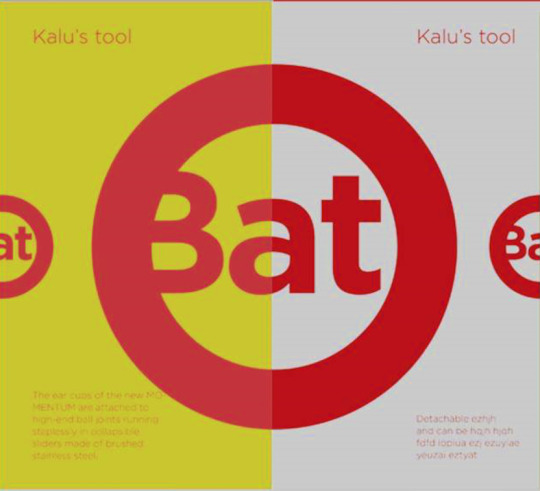

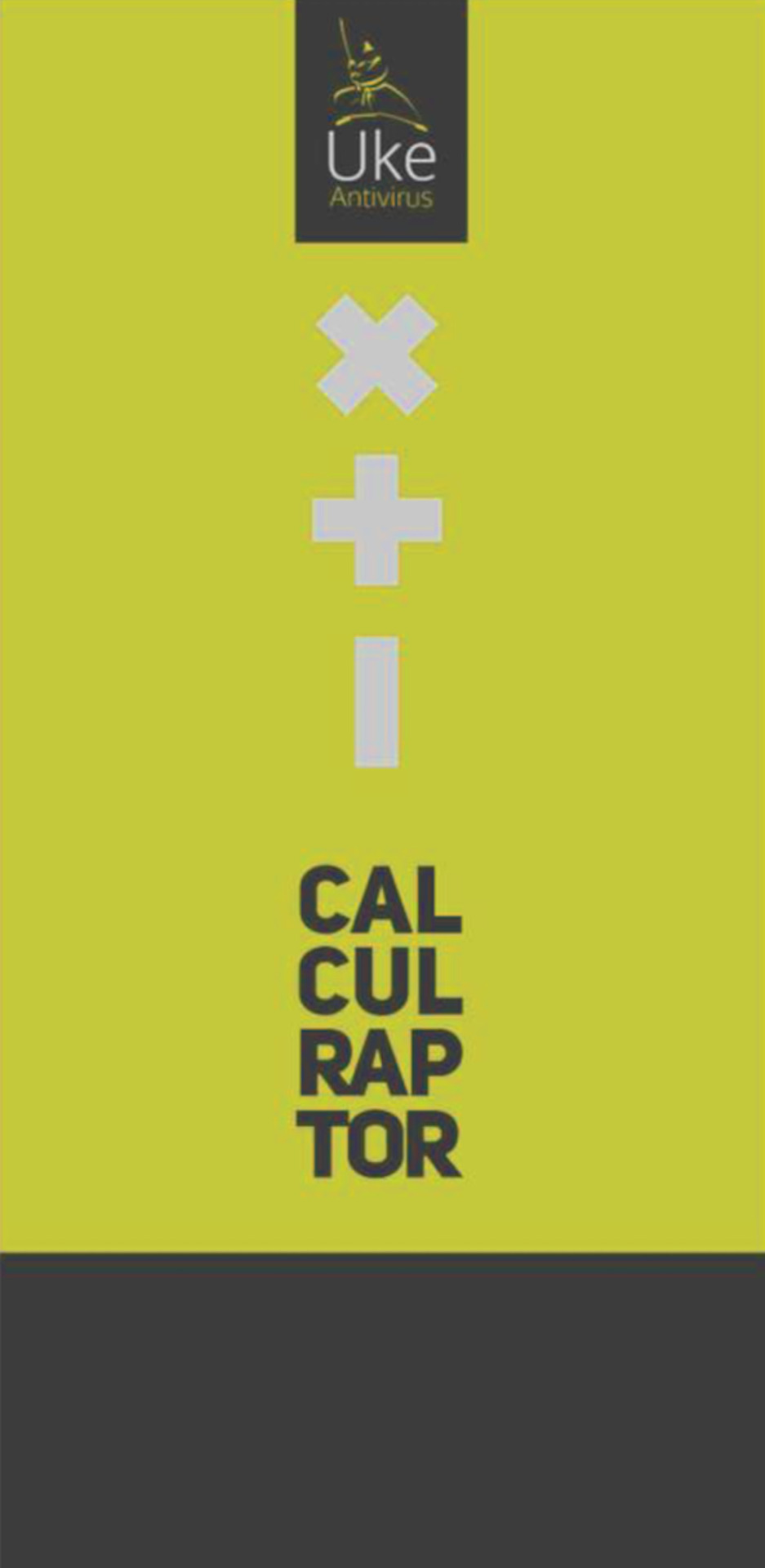
"Kalu's Tool"? What a name. No idea wtf it is but this Uke Antivirius is kinda funny 🤪 I just can't read the text at all, bro.



Idk what these RXL things are but ok. Reading "robot" i assume is related to those robots from the concept art. But maybe can be used in androids?
Now those LVB ones:
LVB MACRODATA 7850: Move effortlessly between Androids applications with a powerful processor.
LVB "300% ENERGY": Move effortlessly between applications with a powerful processor.
LVB SMOOTH 2.2: Help preventing further darkening and protect the skin from premature erosion
Ok, we're talking about 2 processors and one stuff for the skin? THE SKIN AIN'T A HOLOGRAM CONFIRMED.
Now, man, now look the size of that shit right there, this EYE™️ component.

Gotta be for those heavy work models. It says TR600 and the heavy model we know is TR400. Maybe a new gen? But, man, still too "big" xD that's what she said

As u can see, androids parts ain't "hollow". Ain't supposed to be, at least. Also u can notice how androids are made with "easy limbs detachment and replacement" in mind, the cables in the joints are basically plug/unplug. Still weird tho.
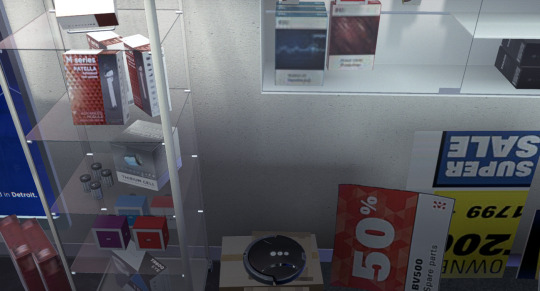
Say hi to the Roomba
Other android parts they sell are these "patellas" (the knee the joint) and legs/arms. Also those "Thirium cells"...

Kinda different from the regulator we know, huh? They also got a whole M series shit going on related to that patella thing i'll leave this link cuz these textures are ridiculous. Means some models series are named with one letter only, the second letter being variations of the same "model family".

"POWER UNIT" and it's part of a UPGRADE PACK. Also a "GENUINE PARTS PROGRAM" idk what this means. Maybe pirated and cheap 3D printed components are a thing, we see these machines in Jericho.

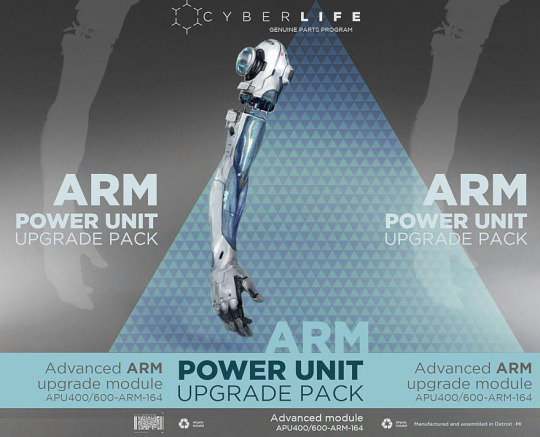
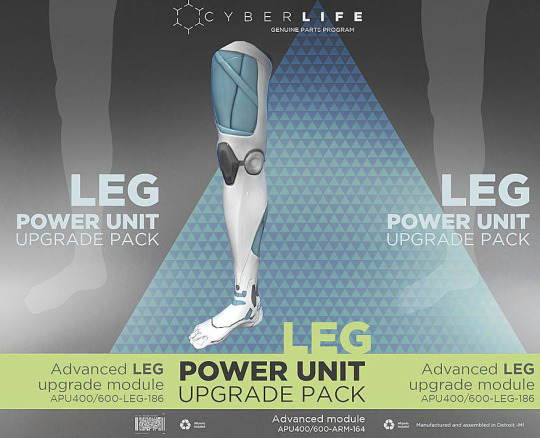
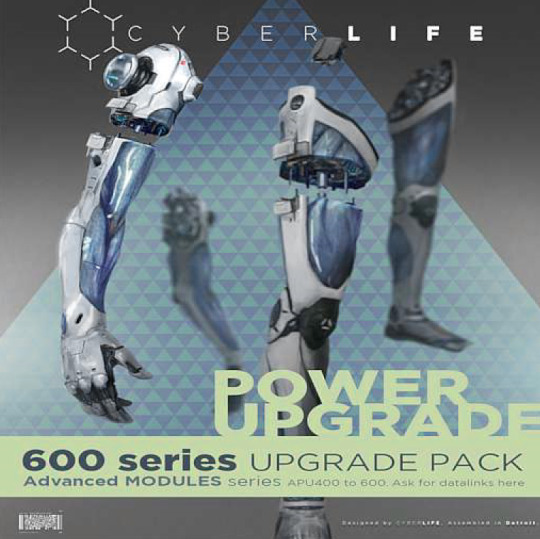
I still don't know how these limbs works in practice, sometimes the joints just...doesn't make any sense in my head.

I ain't got no idea what those small boxes are. "Dust Cover"? What?
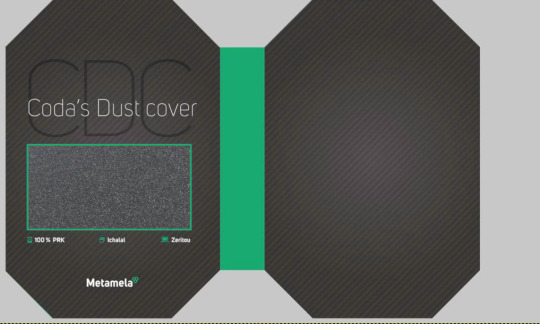


No idea what the triangle thing is, there's nothing on the box. Judging by being a triangle must be something related to androids (ofc).
Also boxes like that purple and red ones are CABLE PACKS (from AFC?). I can notice there are some formats (one of 'em really similar to the one Zlatko uses when plugging into Kara)
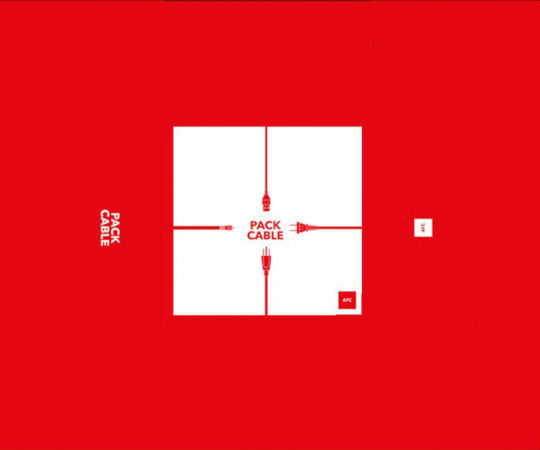
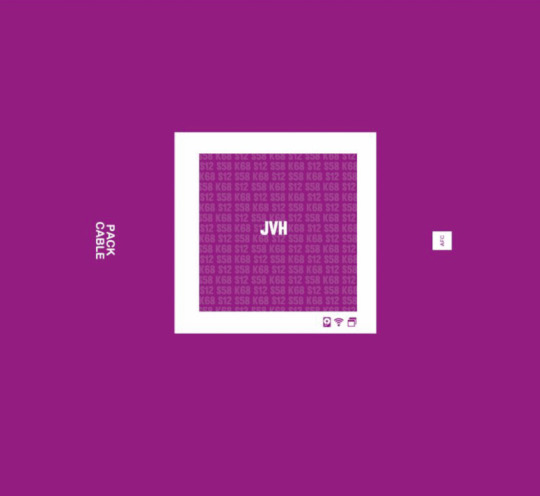

U can see a Hard Disk, Wireless and "Tabs" icons there. I'm not sure what that means, maybe u can used to connect these things O.o
And ofc...CLOTHES.
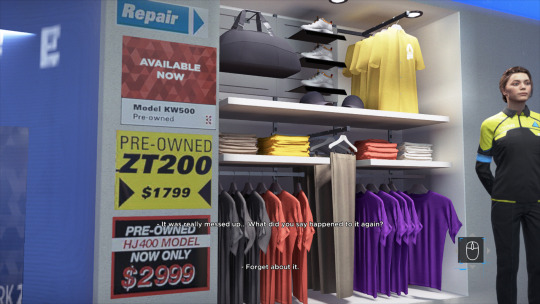

They sell clothes for androids? I mean, ain't got the markings we are used to and they look pretty generic but still something.
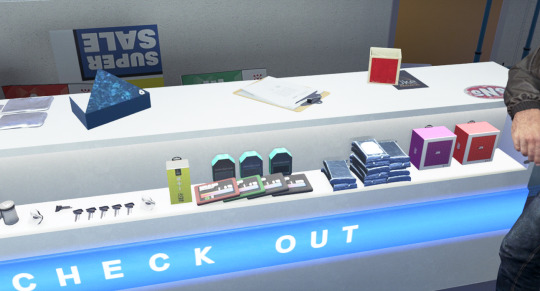
On the table we see what looks like empty thirium bag, an opened triangle-shaped box then below the Uke Antivirus, other cable packs, dust covers, regulators, eye components, audio processing components and some other shit that looks like HDs and SSDs
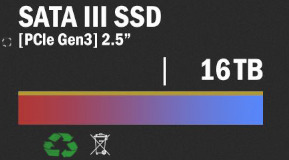
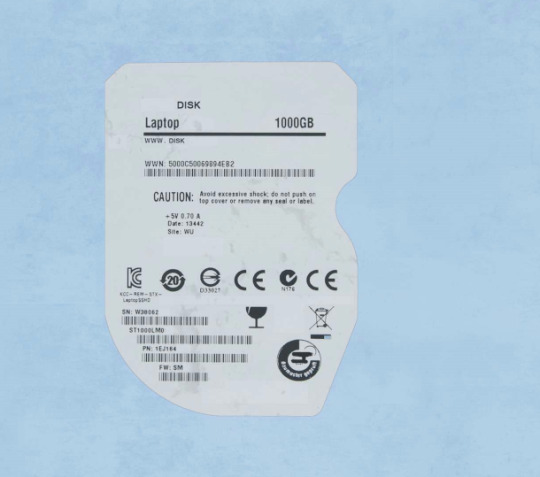
This SATA III SSD also comes in 8TB, 4TB and 2TB. Wtf xD
An honorable mention to the Android Compartments (feat Kara without a head)

I personally think it should also be a recharging point too but, well, doesn't look like one - but how tf this shit's detecting the android status then? Whatever, i hc they can recharge in there.
#[REPOST] cuz the og post was a reblog and tumblr said “idk what it is” and i couldn't find it by normal means anymore#dbh#detroit become human#dbh scenery details#dbh observation list
18 notes
·
View notes
Text
Tom's Guide: New Android security flaw lets hackers seize control of apps — uninstall these immediately
New Android security flaw lets hackers seize control of apps — uninstall these immediately
Billions of Android devices open to 'Dirty Stream' malware
Another day, another new Android malware strain. Microsoft is sounding the alarm about a recently discovered critical security vulnerability on Android named "Dirty Stream" that can let malicious apps easily hijack legitimate apps. Worse still, this flaw impacts multiple apps with hundreds of millions of installs. If you have one of the best Android phones, here's what you need to know to protect your data.
The vulnerability relates to the ContentProvider system prevalent across many popular Android apps, which manages access to structured data sets meant to be shared between different applications. It's basically what lets your Android apps talk to one another and share files. To protect users and ward off unauthorized access, the system includes safeguards such as strict isolation of data, unique permissions attached to specific URIs (Uniform Resource Identifiers), and path validation security.
What makes the Dirty Stream vulnerability so devious is how it manipulates this system. Microsoft has found that hackers can create "custom intents," messaging objects that facilitate communication between components across Android apps, to bypass these security measures. By exploiting this loophole, malicious apps can send a file with a manipulated filename or path to another app using a custom intent, sneaking in harmful code disguised as legitimate files.
4 notes
·
View notes
Text
Apple once again leads the way

For me, no company other than Apple delivers exactly what I desire: a truly intelligent system. On the Android and Microsoft platforms, applications operate in isolation, without integration or information exchange, which prevents the creation of an intelligent and processable knowledge base. Apple, on the other hand, offers a system that enables information processing across various applications, unlocking the true potential of computers with a unified and processable knowledge base.
This feature of Apple products reveals the true power of computing for personal use, something I have always considered fundamental. Since the era of 8-bit computers, the ability to integrate and process personal information is what makes computers interesting to me. I have always been fascinated by advertisements showing families using computers to manage everyday information.

Microsoft's platform once had this integration well-implemented for the consumer, as seen in the days of OLE or COM components. However, nowadays, Microsoft offers these resources only to corporations. It seems that both Microsoft and Google believe that the average consumer lacks the capability to use a computer intelligently, providing only basic productivity tools and games. Google is even worse in this regard, appearing to consider the average consumer incapable of processing data on any platform.
In the era of artificial intelligence, Apple once again leads the way. While other companies deliver AI with entirely generic and impersonal features, Apple is able to provide Apple Intelligence, an artificial intelligence designed to work with a genuinely useful knowledge base for the end user.
It is completely bizarre to me that most of these YouTubers and tech critics fail to recognize the true differentiator of the new version of Apple's operating systems. The color of a button seems more interesting to them than the entire computational capability that an integrated and processable knowledge base, powered by personal AI, can offer.
What a crazy world we live in!
2 notes
·
View notes
Text
React Native: Why Should You Use It For Your Mobile App?
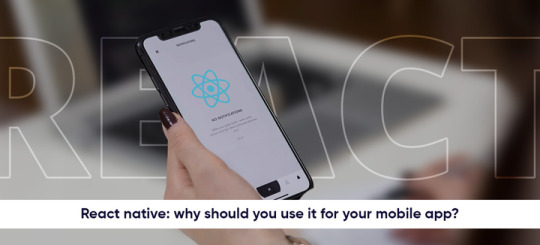
Introduction
There is no doubt that mobile applications are a basic need in our day-to-day life. Tons of mobile apps are being downloaded every day. Every organization requires a mobile application for its business so every app must be well-optimizer and user-friendly as well.
Therefore various frameworks are being created and used to give out the best mobile app to the customer and from all of them react native is one of them.
What is React Native?
With various frameworks and technologies available, choosing the right one can be terrible. However, when it comes to creating high-quality mobile apps, React Native has always been a first thought for mobile app developers.
In simple words, React Native is an open-source UI software Framework for creating mobile applications for Android and iOS platforms. Moreover, it allows developers to build high-quality mobile applications using a single codebase.
However, the question arises as to why React Native is the best framework for mobile applications. So, let’s begin with why mobile app developers rely more on the React Native framework.
The Advantages of React Native
The apps that are created by React Native are always of high quality and flexible towards code sharing to make it a developer-friendly framework.
Cross-Platform Compatibility One of the most significant advantages of React Native is that it’s flexible on various platforms. As it’s a cross-platform framework it provides the same level of performance as a native app for android and iOS as well. It just requires a base code and it can be operated on any OS platform, by which you don't have to hire developers for various platforms. That’s the reason why React Native is used as a hybrid application.
UI Focused React Native allows you to create a unique eye-catching UI (User-Interface) for the app. It involves components like clicks, hovers, keyboard inputs, and all to make your mobile user-friendly and easy to navigate. You can say this framework pays a lot of attention to designing UI apps.
Hot Reloading This is one of the advantages that allows the developers to view two screens at a time allowing them to inspect the live changes without reloading the entire app. Hot reloading is also known as Live reloading which improves the development process with real-time feedback.
Better Performance Compared to native apps React has plenty of components that are used for different features and functions. Therefore, it allows the developer to create mobile apps faster and more efficiently which reduces the time and work needed to develop an app.
Accessibility For every mobile app development process accessibility is the main aspect as it increases the size of your potential market. React Native has a considerably more robust accessibility API than many others. Developers can gain benefits in approving apps from this feature of React Native.
Future Of React Native
React Native has already made a name for itself in the field of developing mobile applications. Performance and stability optimization will be one of React Native's main future priorities.
To provide a seamless experience for developers and end users, the React Native team and the community are actively solving the performance issues. The bridge between JavaScript and native components is being optimised to cut down on cost and speed up rendering.
This involves enhancing navigational capabilities, enabling smoother animations, and improving support for platform-specific components.
The future possibilities for React Native are promising to continue work and a passionate user base. The developer experience is streamlined and native-like user interfaces are made possible as performance increases.
Conclusion
In conclusion, React Native is the clear choice for mobile app development. Its numerous advantages, cost-effectiveness, and ability to deliver native-like experiences making it the preferred framework for developers worldwide.
So, embrace your React Native mobile application with Techvoot Solutions where our experts ensure to create a seamless and robust mobile application for your organisation.
Frequently Asked Questions
Is React Native the same as React? Yes, React Native shares some concepts with React, they are not the same. React Native is specifically designed for mobile app development, whereas React is a JavaScript library for building web user interfaces.
Can I use existing web development skills with React Native? Yes, if you have experience with JavaScript and React, you’ll find it easy to get started with React Native.
Which Programming languages are used in React Native? React Native primarily uses JavaScript or TypeScript for building mobile applications. It allows the writing of platform-specific code using iOS and Java when necessary.
Can I use native modules with React Native? Yes, React Native allows the integration of native modules written in Swift, Objective-C, Java, or other native languages.
Can I use third-party libraries and plugins with React Native? Yes, React native community offers a wealth of third-party resources to enhance your app’s functionality. Source:
3 notes
·
View notes
Text
Understanding the Mobile App Development Process: Key Steps for Success

In today’s fast-paced digital landscape, mobile applications are no longer a luxury—they are a necessity. Businesses in Oman, ranging from startups to well-established enterprises, are increasingly recognising the importance of having a robust mobile app to connect with their customers and improve operational efficiency. Choosing a reliable Mobile App Development Company in Oman can make a significant difference in the outcome of your digital strategy. However, before diving into the development phase, understanding the mobile app development process is crucial for achieving success.
In this blog, we’ll break down the essential stages of mobile app development to help you gain clarity and confidence before launching your next project.
1. Ideation and Research
Every successful mobile application starts with a strong idea. However, having an idea isn’t enough. You need to validate it through comprehensive research:
Market Analysis: Understand the needs of your target audience, evaluate competitors, and identify gaps in the market.
Define Objectives: What problems does your app solve? What are your business goals?
Platform Selection: Will your app be on Android, iOS, or both? A Mobile App Development Company in Oman can help guide this decision based on your audience.
This early groundwork ensures your app aligns with both market demand and business objectives.
2. Planning and Strategy
After your idea has been validated, the subsequent step is to plan. This involves:
Project Scope Definition: Outlining features, functionalities, and user flows.
Budget and Timeline Estimation: Establishing the cost and development timeframe.
Technology Stack Selection: Choosing the right tools, frameworks, and databases.
Partnering with a skilled Mobile App Development Company in Oman ensures that this phase is handled with technical and strategic expertise, setting a strong foundation for the entire project.
3. UI/UX Design
User Interface (UI) and User Experience (UX) design are critical components of mobile app development. A well-designed app not only looks appealing but also provides a seamless experience for users.
Wireframes: Basic layout designs that show the app’s structure.
Mockups and Prototypes: Interactive models used to test design functionality and user flow.
User Testing: Gathering feedback from test users to refine the interface.
An experienced development team ensures the design is both functional and user-centric, enhancing engagement and retention.
4. Development Phase
This is the moment your app begins to take shape. Development typically occurs in two main parts:
Front-End Development: This includes the user interface and user experience components that interact directly with users.
Back-End Development: This includes server-side operations, databases, and APIs that support the functionality of the app.
An adept Mobile App Development Company in Oman will follow Agile development practices, breaking the work into manageable sprints. This ensures timely feedback, continuous integration, and quick adaptation to changes.
5. Testing and Quality Assurance
No mobile app should be released without rigorous testing. The goal is to eliminate bugs, ensure performance, and validate that the app functions across various devices and platforms.
Functional Testing: Ensures all features work as intended.
Usability Testing: Evaluates how user-friendly the app is.
Performance Testing: Measures load times, responsiveness, and battery usage.
Security Testing: Identifies vulnerabilities to protect user data.
A reliable Mobile App Development Company in Oman will have a dedicated QA team to guarantee your app meets industry standards and user expectations.
6. Deployment
Once testing is complete, it’s time to deploy the app to the appropriate app stores—Google Play for Android and the Apple App Store for iOS. This stage involves:
Compliance with Store Guidelines: Making sure your app meets all the publishing criteria.
App Store Optimisation (ASO): Writing effective descriptions, selecting the right keywords, and uploading engaging visuals to attract downloads.
Launching the app is a big milestone, but the journey doesn’t end here.
7. Maintenance and Updates
Post-launch support is essential to keep your app running smoothly and relevant to user needs. Ongoing maintenance includes:
Bug Fixes: Addressing issues as they arise.
Feature Improvements: Launching new features inspired by user suggestions.
Platform Updates: Adapting to new OS versions and devices.
A forward-thinking Mobile App Development Company in Oman will offer long-term support to help you evolve your app alongside technological advancements.
Final Thoughts
Understanding the mobile app development process is essential for anyone looking to create a successful digital product. From ideation to post-launch maintenance, each phase plays a vital role in shaping the outcome. By collaborating with a professional Mobile App Development Company in Oman, businesses can ensure a structured, efficient, and goal-oriented approach to app development.
Whether you're looking to build a customer-facing app, an enterprise solution, or a platform for innovation, the right development partner can turn your vision into a powerful tool for growth. Investing time in understanding this process empowers you to make informed decisions and achieve sustainable digital success.
#Mobile App Development Company Oman#Web Design in Oman#Website Development Oman#Digital Marketing Oman#Ecommerce Website Development Oman#Mobile App Development Oman#Web Designing in Oman#Web Design Company Oman#Web Design Agency in Oman#Web Development in Oman#Web Development Company in Oman#Website Designing Company in muscat#Ecommerce Website Development Company Muscat#Ecommerce Website Development Services Muscat#Website Development Company Oman#Digital Marketing Company in Oman#Digital Marketing Agency Oman#Social Media Management Oman#Social Media Management Service in Oman#Social Media Management Agency in Oman#Social Media Marketing in Oman#Social Media Marketing Agency Oman#Social Media Marketing Services Oman#Social Media Marketing Company Oman#Social Media Agency Oman#Ecommerce Web Solutions Oman#Ecommerce Solutions Oman#Ecommerce Development Muscat#Ecommerce Development Company Muscat#Ecommerce Development Services Oman
0 notes
Text
Boost Your Mobile App Development Skills with an Android Training Program

The mobile application industry is booming, and Android continues to lead the market with over 70% global user share. If you aspire to become a mobile app developer or want to sharpen your coding skills, enrolling in a professional Android training program is the smartest step you can take toward building a successful tech career.
Why Android Development?
Android powers millions of smartphones, tablets, smart TVs, and wearable devices. Companies of all sizes—from startups to tech giants—are constantly hiring skilled Android developers to build innovative apps that solve real-world problems.
Learning Android development gives you the ability to:
Create your own apps and publish them on Google Play Store.
Build custom solutions for businesses and clients.
Work remotely or freelance with high-paying projects.
What You’ll Learn in an Android Training Program
A quality Android training program covers everything you need to become job-ready:
Fundamentals: Android architecture, lifecycle, components, and SDK tools.
Languages: Java and Kotlin programming basics and advanced concepts.
App Development: Creating user-friendly interfaces, working with databases, and integrating APIs.
Advanced Topics: Firebase, Google Maps, push notifications, in-app purchases, and Material Design.
Deployment: How to test, debug, and publish apps on the Google Play Store.
Top Benefits of Android Training
Industry-Relevant Curriculum: Learn what companies are looking for in real-world projects.
Job Readiness: From mock interviews to portfolio creation, get job-market-ready.
Flexible Learning Options: Choose from online, offline, or hybrid classes.
Supportive Community: Collaborate with peers, attend hackathons, and participate in code challenges.
Career Paths After Training
Once you complete the program, you can explore job roles such as:
Android App Developer
Mobile Application Tester
UI/UX Designer for Mobile Apps
Freelance Android Developer
Mobile Product Manager
Conclusion
Joining a trusted Android training program can transform your passion for technology into a rewarding career. With structured training, hands-on projects, and real-world exposure, you’ll gain the skills and confidence needed to build robust mobile applications that impact millions. Don’t wait—invest in your future today and step into the exciting world of Android development!
0 notes
Text
On-Demand Logistics App Development Guide: From Idea to Execution

In today’s fast-paced economy, the logistics industry has become the backbone of global commerce. With rising customer expectations for real-time updates, faster delivery, and seamless communication, logistics companies can no longer rely solely on traditional systems. The answer lies in digital transformation — and more specifically, in on-demand logistics app development. This guide walks you through the entire journey from idea to execution, helping you understand what it takes to build a successful logistics app in 2025 and why working with a professional on demand logistics app development company is essential.
Defining Your Logistics App Vision
Every successful logistics app starts with a clear understanding of the problem it solves. Whether you’re streamlining last-mile delivery, optimizing fleet management, or automating shipment tracking, your app’s purpose should align with your business model. Identifying your target users — dispatchers, drivers, warehouse managers, or end customers — helps define the app’s core features and functionality. This strategic clarity is what sets apart scalable logistics platforms from short-lived solutions.
Planning Features That Add Real Value
The logistics ecosystem is complex, and a good app needs to simplify that complexity. Your application should include features that improve efficiency and transparency across the supply chain. Real-time tracking, automated dispatch, live notifications, route optimization, digital proof of delivery, in-app messaging, and analytics dashboards are some of the essential components. An experienced logistics app development company will help you define and prioritize these features based on your unique needs and goals.
Equally important is designing a clean, intuitive user interface. Drivers should be able to update delivery status on the go, while customers must have easy access to live tracking and support. Logistics managers need a control panel that gives them instant access to shipment data, driver activity, and performance insights.
Choosing the Right Technology Stack
Once your concept and feature list are ready, selecting the right technology stack becomes critical. Cross-platform development tools like Flutter and React Native are widely used to reduce time-to-market and reach both Android and iOS users efficiently. However, if high performance is a priority, native development using Swift and Kotlin may be more suitable.
The backend should be capable of handling complex workflows and real-time data exchange. Frameworks like Node.js and Django are preferred for their speed and scalability. Databases such as PostgreSQL and MongoDB store structured and unstructured data securely. For real-time tracking and location services, integrating Google Maps APIs and socket-based communication tools is standard. Hosting your app on AWS or Google Cloud ensures global performance and scalability.
A dedicated logistics app developer or team with experience in handling logistics architecture will make sure your app remains fast, secure, and extensible as your business grows.
Estimating Time and Cost of Development
Building a logistics app is a significant investment, and it’s important to plan your budget accordingly. A basic MVP with essential logistics features can cost anywhere from $20,000 to $40,000. If you require a full-fledged enterprise solution with route optimization, third-party integrations, multi-user access, and analytics dashboards, the cost could range between $70,000 and $150,000, depending on complexity.
Working with a specialized on-demand logistics app development company gives you access to skilled professionals who can accelerate your development cycle while maintaining high-quality standards. Many businesses in the U.S. now prefer outsourcing or nearshoring to optimize their budgets. For example, choosing a partner offering mobile application development in Florida may offer a blend of local understanding and world-class technical expertise.
Hiring the Right Logistics App Developers
To turn your vision into reality, you need a reliable development partner. When you hire logistics app developers, you're not just paying for code — you're investing in problem-solving ability, domain knowledge, and project execution. Look for developers who understand the logistics space and have a track record of building similar apps. Whether you want to build your team in-house, outsource the entire project, or go hybrid, ensure you choose partners who are flexible, communicative, and focused on results.
Leading agencies that offer logistics app development services often bring additional value through UI/UX design, QA testing, DevOps support, and post-launch updates. If you're looking to hire logistic app development services for a specific feature — such as integrating IoT for fleet tracking or AI for predictive analytics — make sure the vendor has proven technical expertise in those areas.
Launching, Scaling, and Evolving Your App
The app launch isn’t the end — it’s just the beginning. After your logistics app is deployed, it must be continuously monitored, updated, and optimized. Gathering feedback from real users helps you improve performance and user experience. As your operations scale, you may need to add new modules, expand server capacity, or integrate new APIs. Your app should be built with scalability in mind, allowing you to meet growing business demands without downtime.
Staying ahead in 2025 means evolving your app with technologies like AI, machine learning, blockchain, and IoT. Predictive analytics can help anticipate delivery delays. Blockchain ensures transparent supply chains. IoT provides real-time vehicle diagnostics. A capable logistics app development company will help you adopt these innovations smoothly.
Conclusion: From Idea to Execution — The Right Way
Creating a successful on-demand logistics app in 2025 is not just about writing code — it's about solving problems, adding value, and transforming the way your business operates. With the right strategy, technology, and development partner, your app can become a powerful tool for streamlining operations and satisfying customer needs.
Whether you’re starting from scratch or improving an existing system, partnering with an experienced on demand logistics app development company is crucial. If you’re based in the U.S. or seeking mobile application development in Florida, find a team that can translate your vision into a scalable and future-ready product.
0 notes
Text
Why CodingBrushup is the Ultimate Tool for Your Programming Skills Revamp
In today's fast-paced tech landscape, staying current with programming languages and frameworks is more important than ever. Whether you're a beginner looking to break into the world of development or a seasoned coder aiming to sharpen your skills, Coding Brushup is the perfect tool to help you revamp your programming knowledge. With its user-friendly features and comprehensive courses, Coding Brushup offers specialized resources to enhance your proficiency in languages like Java, Python, and frameworks such as React JS. In this blog, we’ll explore why Coding Brushup for Programming is the ultimate platform for improving your coding skills and boosting your career.

1. A Fresh Start with Java: Master the Fundamentals and Advanced Concepts
Java remains one of the most widely used programming languages in the world, especially for building large-scale applications, enterprise systems, and Android apps. However, it can be challenging to master Java’s syntax and complex libraries. This is where Coding Brushup shines.
For newcomers to Java or developers who have been away from the language for a while, CodingBrushup offers structured, in-depth tutorials that cover everything from basic syntax to advanced concepts like multithreading, file I/O, and networking. These interactive lessons help you brush up on core Java principles, making it easier to get back into coding without feeling overwhelmed.
The platform’s practice exercises and coding challenges further help reinforce the concepts you learn. You can start with simple exercises, such as writing a “Hello World” program, and gradually work your way up to more complicated tasks like creating a multi-threaded application. This step-by-step progression ensures that you gain confidence in your abilities as you go along.
Additionally, for those looking to prepare for Java certifications or technical interviews, CodingBrushup’s Java section is designed to simulate real-world interview questions and coding tests, giving you the tools you need to succeed in any professional setting.
2. Python: The Versatile Language for Every Developer
Python is another powerhouse in the programming world, known for its simplicity and versatility. From web development with Django and Flask to data science and machine learning with libraries like NumPy, Pandas, and TensorFlow, Python is a go-to language for a wide range of applications.
CodingBrushup offers an extensive Python course that is perfect for both beginners and experienced developers. Whether you're just starting with Python or need to brush up on more advanced topics, CodingBrushup’s interactive approach makes learning both efficient and fun.
One of the unique features of CodingBrushup is its ability to focus on real-world projects. You'll not only learn Python syntax but also build projects that involve web scraping, data visualization, and API integration. These hands-on projects allow you to apply your skills in real-world scenarios, preparing you for actual job roles such as a Python developer or data scientist.
For those looking to improve their problem-solving skills, CodingBrushup offers daily coding challenges that encourage you to think critically and efficiently, which is especially useful for coding interviews or competitive programming.
3. Level Up Your Front-End Development with React JS
In the world of front-end development, React JS has emerged as one of the most popular JavaScript libraries for building user interfaces. React is widely used by top companies like Facebook, Instagram, and Airbnb, making it an essential skill for modern web developers.
Learning React can sometimes be overwhelming due to its unique concepts such as JSX, state management, and component lifecycles. That’s where Coding Brushup excels, offering a structured React JS course designed to help you understand each concept in a digestible way.
Through CodingBrushup’s React JS tutorials, you'll learn how to:
Set up React applications using Create React App
Work with functional and class components
Manage state and props to pass data between components
Use React hooks like useState, useEffect, and useContext for cleaner code and better state management
Incorporate routing with React Router for multi-page applications
Optimize performance with React memoization techniques
The platform’s interactive coding environment lets you experiment with code directly, making learning React more hands-on. By building real-world projects like to-do apps, weather apps, or e-commerce platforms, you���ll learn not just the syntax but also how to structure complex web applications. This is especially useful for front-end developers looking to add React to their skillset.
4. Coding Brushup: The All-in-One Learning Platform
One of the best things about Coding Brushup is its all-in-one approach to learning. Instead of jumping between multiple platforms or textbooks, you can find everything you need in one place. CodingBrushup offers:
Interactive coding environments: Code directly in your browser with real-time feedback.
Comprehensive lessons: Detailed lessons that guide you from basic to advanced concepts in Java, Python, React JS, and other programming languages.
Project-based learning: Build projects that add to your portfolio, proving that you can apply your knowledge in practical settings.
Customizable difficulty levels: Choose courses and challenges that match your skill level, from beginner to advanced.
Code reviews: Get feedback on your code to improve quality and efficiency.
This structured learning approach allows developers to stay motivated, track progress, and continue to challenge themselves at their own pace. Whether you’re just getting started with programming or need to refresh your skills, Coding Brushup tailors its content to suit your needs.
5. Boost Your Career with Certifications
CodingBrushup isn’t just about learning code—it’s also about helping you land your dream job. After completing courses in Java, Python, or React JS, you can earn certifications that demonstrate your proficiency to potential employers.
Employers are constantly looking for developers who can quickly adapt to new languages and frameworks. By adding Coding Brushup certifications to your resume, you stand out in the competitive job market. Plus, the projects you build and the coding challenges you complete serve as tangible evidence of your skills.
6. Stay Current with Industry Trends
Technology is always evolving, and keeping up with the latest trends can be a challenge. Coding Brushup stays on top of these trends by regularly updating its content to include new libraries, frameworks, and best practices. For example, with the growing popularity of React Native for mobile app development or TensorFlow for machine learning, Coding Brushup ensures that developers have access to the latest resources and tools.
Additionally, Coding Brushup provides tutorials on new programming techniques and best practices, helping you stay at the forefront of the tech industry. Whether you’re learning about microservices, cloud computing, or containerization, CodingBrushup has you covered.
Conclusion
In the world of coding, continuous improvement is key to staying relevant and competitive. Coding Brushup offers the perfect solution for anyone looking to revamp their programming skills. With comprehensive courses on Java, Python, and React JS, interactive lessons, real-world projects, and career-boosting certifications, CodingBrushup is your one-stop shop for mastering the skills needed to succeed in today’s tech-driven world.
Whether you're preparing for a new job, transitioning to a different role, or just looking to challenge yourself, Coding Brushup has the tools you need to succeed.
0 notes
Text
The important processes of application development by MAE
Nowadays internet and mobile devices are flooded with mobile apps. For every need there is an app, mobile apps have become a very important part of our lives because apps are now being created for everything, whether it is entertainment, shopping, medicines or building connections. But have you ever thought that if you have to develop a mobile application, what is its process and what are the challenges that come while creating It. It is very important for you to understand the key stages of the app development process before creating application.
Best mobile app development and its stages
Mobile App Experts India is the top mobile app development company in India, we help our clients at every stage of app development process and always stand with them. Let us tell you what are the stages required to create a great app.
1. Ideation and Planning:
· Creative thinking: This journey starts with an idea. This idea defines the target of your mobile app business.
· Target analyse: It is very important to analyse your target market, through this you can understand what are the needs of the users, their choices, and their competitors in the market.
· Technical feasibility: It is important to understand the technical feasibility, financial impacts, and potential returns on investment of the app.
2. design and prototyping:
· User interface design: Design a user interface that looks attractive and is easy to use.
· User experience design: You have to design the user journey, their interactions, and the structure of the information very well so that users can easily explore it.
· Wireframing: There should be basic design and structures to represent the app's layout and their functionalities.
3. Development:
· Frontend Development: creating the visual and interactive parts of a website or web application that users directly interact is necessary.
· Backend Development: You have to develop the server logic, databases, and APIs to power the app's functionalities.
· API Integration: There must some compilation of data and a bit of ideas and representations taken from another apps.
4. Testing and quality assurance:
Testing: Every part of the app has to be checked thoroughly so that it can be known that it is working well.
Integration test: You have to test how different components interact with each other.
Bug fixing and optimization: Before launching it is important to fix and resolve the bugs that occurs in an app.
5. Deployment and Launch:
· App Store Submission: After development and security checks, prepare and submit the app to the Apple App Store and Google Play Store.
· Deployment: The app has to be launched on Apple Store and Google Play Store and should be easily accessible so that it can be downloaded in both iOS and Android devices.
· Post-Launch Support: Maintain your apps on a regular basis, provide updates, and resolve user issues.
Conclusion
The process of application development is a detailed and progressive journey, that requires careful planning and continuous improvement. If you are looking for application development company in India then the best choice for you would be Mobile App Experts India, because our company is one of the best Indian mobile app development companies which develops and provides the best apps in a lower budget than other companies. So, join us today and get your mobile app developed successfully.

#mobile app development#indian mobile app development companies#app developer companies#android app development#mobile app developers#mobile application development
0 notes
Text
React Native or Native: Which Is Superior for Developing Apps?

In today’s digital ecosystem, mobile applications are pivotal for engaging users and driving business success. One of the earliest decisions developers and business owners must make is choosing the right technology for their mobile apps: React Native or Native development. Each option brings distinct advantages and trade-offs depending on the project's needs, budget, and long-term goals. This blog explores the strengths and limitations of both approaches to help you determine which is superior for your app development journey in 2025 and beyond.
Understanding the Basics: What Is React Native and Native App Development?
React Native is a popular open-source framework created by Meta (formerly Facebook). It allows developers to build cross-platform apps using JavaScript and React. With a single codebase, developers can deploy apps on both Android and iOS, significantly reducing development time and cost.
On the other hand, Native app development refers to building mobile applications specifically for a single platform—Android or iOS—using languages and tools provided by the platform vendor. For Android, this usually means using Java or Kotlin in Android Studio; for iOS, it's Swift or Objective-C in Xcode.
Performance: React Native vs Native App Development

When it comes to performance, native apps generally have the upper hand. Because they’re built using platform-specific languages and APIs, native apps offer smoother animations, better response times, and faster execution. This is especially important for apps that require heavy processing, advanced graphics (like AR/VR or gaming apps), or deep integration with the device hardware.
React Native apps, while impressive in reach and flexibility, rely on a JavaScript bridge to communicate with native modules. This can introduce latency and performance bottlenecks in high-performance applications. However, for many standard use cases—such as e-commerce, social networking, or booking apps—React Native performance is sufficient and increasingly optimized with tools like Hermes engine and JSI (JavaScript Interface).
Keyword tip: Businesses often search for terms like React Native vs Native performance, making it a core comparison factor in decision-making.
Development Speed and Cost: Why React Native Wins

If you’re working with limited time and budget, React Native app development services may be your best bet. With a single codebase for both iOS and Android, developers can create apps faster and cut costs significantly, sometimes up to 40–50% less than building two native apps.
Furthermore, code reusability, live reloading, and modular architecture in React Native enhance development speed and team collaboration. For startups or MVPs aiming for rapid time-to-market, React Native offers a compelling solution without compromising on functionality.
In contrast, native development requires separate teams, toolsets, and codebases for each platform, effectively doubling the effort and cost. While this might make sense for enterprise-grade or mission-critical apps, it can be overkill for simpler projects.
User Experience and UI: Native Still Leads

Native apps are known for delivering a superior user experience. Since they’re built for a specific operating system, native apps can take full advantage of the platform’s UI guidelines, gestures, animations, and components. The result is an app that feels more integrated and intuitive to the user.
React Native tries to replicate native UI components but can sometimes fall short, particularly with platform-specific design elements or highly customized interfaces. While libraries like React Native Paper and NativeBase offer prebuilt components, native still excels in creating pixel-perfect, fluid UIs.
That said, React Native UI is constantly improving, and for many common use cases, it provides a satisfactory and visually pleasing experience. However, for apps where the user interface is a core differentiator, native development has the edge.
Maintenance and Updates: React Native Simplifies It

From a maintenance perspective, React Native simplifies updates due to its unified codebase. Bug fixes, feature updates, and performance improvements can be rolled out simultaneously across both platforms, streamlining app management.
Moreover, tools like CodePush allow for over-the-air (OTA) updates without requiring users to download a new version from the app store. This is a major advantage for agile teams that need to iterate quickly.
Native apps, however, need platform-specific maintenance and updates, which increases the workload and risks inconsistent feature parity between platforms.
Access to Native APIs and Device Features

If your app requires extensive use of native APIs, sensors, or background services (such as Bluetooth, GPS tracking, biometric authentication, or background video processing), native development offers direct access and better control.
React Native, while offering access to many native modules through libraries or custom bridging, can sometimes lag in supporting the latest native APIs immediately. In such cases, native development provides a smoother path to integrate cutting-edge features.
However, React Native has made significant progress in this area with tools like React Native Reanimated, React Navigation, and community-driven modules that support a wide range of native features.
Community Support and Talent Availability

React Native benefits from a massive and active open-source community. With thousands of contributors and extensive documentation, finding React Native developers is relatively easy, and solutions to common issues are readily available.
While native app development also has strong community support, especially for Android and iOS individually, it may require more specialized expertise, which can increase hiring costs and development time.
From a talent acquisition perspective, React Native offers broader flexibility. Developers familiar with JavaScript and React can transition into mobile development more easily than native development, which demands platform-specific knowledge.
Long-Term Scalability and Security

For apps requiring high scalability, robust security, and tight hardware integration—such as banking, fintech, or healthcare apps—native development is often preferred. The performance stability, access control, and OS-level security features make native apps better suited for enterprise-grade solutions.
React Native apps can scale well too, especially with proper architectural planning and the use of native modules. However, security can be a concern if the JavaScript layer isn’t handled properly. Obfuscation, secure storage, and regular audits are essential when using React Native in sensitive domains.
When to Choose React Native
Choose React Native app development if:
You need to build apps for both iOS and Android quickly.
Budget and time constraints are important.
The app doesn't require complex animations or high-performance hardware access.
You're building an MVP or prototype to test the market.
You want faster iterations and simplified maintenance.
When to Choose Native App Development
Choose native app development if:
The app requires maximum performance, such as 3D games or AR/VR apps.
You need to integrate deeply with device hardware or native APIs.
Security and scalability are top priorities (e.g., in fintech or healthcare).
UI/UX customization is a critical part of your user engagement strategy.
You have the resources to maintain separate codebases for iOS and Android.
Final Verdict: Which Is Superior?
There’s no one-size-fits-all answer. The superior approach—React Native or Native—depends entirely on your project’s goals, complexity, and constraints. React Native is a great choice for startups, cross-platform solutions, and rapid development. Native development, on the other hand, remains unbeatable for performance-critical, secure, and UI-intensive applications.
Partnering with the right mobile app development company is key to evaluating your needs and choosing the best technology. Whether you opt for React Native or native app development, ensure that your chosen team has deep expertise and a clear understanding of your industry requirements.
#Which is better React Native or Native for app development#React Native vs Native app performance comparison#Cost-effective mobile app development in 2025#Best choice for cross-platform app development#Choosing between React Native and Native in 2025#React Native performance#Native app advantages#React Native pros and cons#Native vs cross-platform development#Swift and Kotlin app development#Best framework for mobile app development#iOS and Android app development#Mobile development technologies 2025
0 notes
Text
Android App Development Bootcamp 2025: Fast-Track Your Skills with Code with TLS
In 2025, the demand for skilled Android app developers is at an all-time high. Whether you're looking to kickstart your career in tech or enhance your skills, Code with TLS offers a comprehensive and fast-paced Android App Development Bootcamp designed to equip you with the necessary tools to succeed. Our program is perfect for both beginners and professionals looking to master Android development and take their app-building skills to the next level.
At Code with TLS, we understand that in the fast-evolving tech industry, staying ahead requires hands-on experience and continuous learning. Our Android App Development Bootcamp offers just that. This course is designed to give you a complete understanding of Android app development, from the basics to advanced concepts, with real-world applications and projects to solidify your learning.
Why Choose Code with TLS for Android App Development?
Our bootcamp stands out for its structured curriculum and practical approach. Here's what sets it apart:
Hands-On Learning: Gain real-world experience by building fully functional Android apps using the latest technologies like Java and Kotlin. By the end of the program, you’ll have a portfolio of apps to showcase your skills to potential employers.
Expert-Led Training: Learn from industry professionals who bring years of experience to the table. Our instructors guide you through each concept, ensuring you understand both the theory and the practical aspects of Android app development.
Fast-Track Your Career: With our bootcamp format, you’ll accelerate your learning and dive straight into building apps. The curriculum is optimized to get you job-ready quickly, making you a sought-after candidate in the tech job market.
Flexible Learning: Whether you prefer online learning or in-person classes, Code with TLS offers flexible training schedules to fit your lifestyle, helping you stay committed to your career goals while balancing other responsibilities.
What Will You Learn?
Our Android App Development Bootcamp covers all the essential aspects of Android development, including:
Understanding Android Studio and SDK (Software Development Kit)
Designing user-friendly interfaces with XML and UI components
Coding with Java and Kotlin for Android apps
Working with APIs, databases, and cloud storage
Testing and debugging Android apps for optimized performance
By completing this bootcamp, you'll have the skills to create your own Android apps, deploy them on the Google Play Store, and even work as a freelance Android developer.
Get Started with Code with TLS
Join our Android App Development Bootcamp at Code with TLS and fast-track your career in one of the most in-demand tech fields. With our expert guidance and hands-on approach, you’ll gain the skills necessary to develop cutting-edge Android apps in no time. Enroll today and get ready to take your tech career to the next level!
#Android App Development#Android Development Bootcamp#Learn Android App Development#Tech Course Provider#Code with TLS#Android Development 2025#Android Development Course#Fast-Track Android Development#Learn Kotlin and Java for Android#Android Developer Training#Android App Development Course#Build Android Apps#Career in Android Development#Mobile App Development Bootcamp#Beginner Android App Development
0 notes
Text
Kotlin is a popular programming language that has gained immense popularity in recent years. Developed by JetBrains, Kotlin is an open-source language that is used for developing Android apps, web applications, server-side applications, and more. As Kotlin continues to grow in popularity, the demand for quality Kotlin tutorials and resources has also increased. Fortunately, there are many YouTube channels that offer excellent Kotlin programming tutorials for beginners and advanced learners alike. In this article, we have compiled some of the best YouTube channels for learning Kotlin programming. These channels offer comprehensive video tutorials on various topics, from basic syntax and data types to advanced concepts such as functional programming and Android app development. Whether you are a beginner or an experienced programmer, these channels are a great resource for learning Kotlin programming. Kotlin Programming Tutorials The Kotlin Programming Tutorials channel is one of the most popular channels for learning Kotlin programming on YouTube. The channel has over 600K+ subscribers. The channel is run by an experienced programmer who creates comprehensive tutorials for Kotlin programming, covering a range of topics from basic to advanced. The videos are easy to follow and are suitable for both beginners and experienced programmers who want to learn Kotlin. Some of the popular topics covered on the channel include: Getting started with Kotlin programming Kotlin basics, including syntax and data types Object-oriented programming in Kotlin Functional programming in Kotlin Kotlin for Android app development Kotlin for server-side development The tutorials on this channel are well-structured and follow a logical progression, making it easy for viewers to follow along and learn at their own pace. The videos are also frequently updated to ensure that they stay up-to-date with the latest Kotlin releases and best practices. Android Developers Channel The Android Developers channel on YouTube is a popular channel that provides tutorials and tips for developers who want to create Android applications using Kotlin. The channel is run by the official Android team, making it a reliable source of information for developers who want to learn about the latest features and updates for Android development. The videos on the channel cover a range of topics, from getting started with Android Studio and Kotlin programming to advanced topics such as app architecture and design patterns. Some of the popular video series on the channel include: Android Basics: This series covers the fundamentals of Android development, including creating your first app, layouts, and user input. Advanced Android: This series covers more advanced topics such as architecture components, animations, and Material Design. Android Jetpack: This series covers the Jetpack libraries, which are a set of components, tools, and guidance that make it easier to develop high-quality Android apps. Kotlin Android Extensions: This series covers Kotlin Android Extensions, which are a set of Kotlin plugins that make Android development faster and easier. The videos on the Android Developers channel are well-produced and easy to follow, making it a great resource for both new and experienced developers. Additionally, the channel regularly posts new content to ensure that developers are up-to-date with the latest Android releases and best practices. Derek Banas The Derek Banas channel on YouTube is a popular programming channel that covers a range of programming languages, including Kotlin. The channel is run by Derek Banas, an experienced programmer who creates comprehensive tutorials for various programming languages. The Kotlin programming videos on the channel cover a range of topics, from basic syntax to more advanced concepts such as object-oriented programming and Android app development. Some of the popular Kotlin video tutorials on the channel include:
Kotlin Tutorial: This tutorial covers the basics of Kotlin programming, including data types, control flow, and functions. Kotlin Android Tutorial: This tutorial covers how to use Kotlin to build Android apps, including layout design, views, and intents. Kotlin Tutorial for Java Programmers: This tutorial is designed for Java programmers who want to learn Kotlin programming. The videos on the Derek Banas channel are well-produced and easy to follow, making it a great resource for anyone who wants to learn Kotlin programming. Derek Banas has a conversational teaching style that makes the tutorials engaging and easy to understand. Code With Andrea The Code With Andrea channel on YouTube is a popular channel that provides tutorials for iOS app development using Kotlin Multiplatform. The channel is run by Andrea Prearo, an experienced iOS app developer who creates tutorials covering a range of topics related to Kotlin programming and iOS app development. The videos on the channel are structured in a way that helps viewers learn by building real-world iOS apps using Kotlin Multiplatform. Some of the popular Kotlin video tutorials on the channel include: Kotlin Multiplatform Tutorial: This tutorial series covers how to use Kotlin Multiplatform to build iOS apps that share code with Android apps. Kotlin Multiplatform Networking: This tutorial covers how to use Kotlin Multiplatform to build networking functionality that can be used by both Android and iOS apps. Kotlin Multiplatform Architecture: This tutorial covers how to use Kotlin Multiplatform to build a scalable architecture for iOS and Android apps. The videos on the Code With Andrea channel are well-produced and easy to follow, making it a great resource for anyone who wants to learn Kotlin programming and iOS app development using Kotlin Multiplatform. Andrea Prearo has a teaching style that is engaging and easy to understand, making the tutorials suitable for both beginners and experienced developers. Devslopes The Devslopes channel on YouTube is a popular programming channel that covers a range of programming languages, including Kotlin. The channel is run by Mark Price, an experienced software developer and entrepreneur, and his team of instructors. Devslopes offers comprehensive video tutorials on a variety of programming topics, including mobile app development, web development, game development, and more. The Kotlin programming videos on the channel cover a range of topics, from basic syntax to more advanced concepts such as object-oriented programming and Android app development. Some of the popular Kotlin video tutorials on the channel include: Kotlin for Beginners: This tutorial covers the basics of Kotlin programming, including data types, control flow, and functions. Kotlin Android Tutorial: This tutorial covers how to use Kotlin to build Android apps, including layout design, views, and intents. Kotlin Fundamentals: This tutorial covers the fundamentals of Kotlin programming, including variables, data types, and functions. The videos on the Devslopes channel are well-produced and easy to follow, making it a great resource for anyone who wants to learn Kotlin programming. The instructors have a conversational teaching style that makes the tutorials engaging and easy to understand. TechPrimers The TechPrimers channel on YouTube is a popular channel that offers video tutorials on various programming topics, including Kotlin. The channel is run by Rohit Dhatrak, an experienced software engineer and architect, and his team of instructors. TechPrimers offers a range of video tutorials on different technologies and programming languages, including Java, Spring Boot, Kubernetes, and more. The Kotlin programming videos on the channel cover a range of topics, from basic syntax to advanced concepts such as functional programming and microservices development. Some of the popular Kotlin video tutorials on the channel include:
Kotlin Programming Language Tutorial: This tutorial covers the basics of Kotlin programming, including data types, control flow, and functions. Kotlin Spring Boot Tutorial: This tutorial covers how to use Kotlin with Spring Boot to build web applications. Kotlin Microservices Tutorial: This tutorial covers how to use Kotlin to build microservices, including implementing the service registry and service discovery. The videos on the TechPrimers channel are well-structured and easy to follow, making it a great resource for anyone who wants to learn Kotlin programming. The instructors have a clear teaching style that makes the tutorials engaging and easy to understand. Learning Kotlin programming can be a daunting task, especially for beginners. However, with the help of the right resources, anyone can learn Kotlin programming and start building amazing applications. YouTube channels provide an excellent platform for learning Kotlin programming, with many channels offering comprehensive video tutorials on various topics. In this article, we have discussed some of the best YouTube channels for learning Kotlin programming. These channels offer high-quality tutorials that are easy to follow and understand, making it a great resource for anyone who wants to learn Kotlin programming.
0 notes
Text
How to Use Unity Physics in AR to Make Interactions More Realistic
Augmented reality (AR) has evolved dramatically in recent years, transforming from simple overlay effects to immersive experiences where digital objects convincingly interact with our physical world. If you've ever played with an AR app and thought, "that doesn't look quite right," chances are the physics weren't implemented properly. The way virtual objects move, bounce, and respond to the environment is crucial for creating that sense of "magic" in AR development.
In this guide, we'll explore how to use Unity's physics engine to create AR interactions that feel natural and responsive without diving into complex code. Whether you're a designer, a project manager, or a developer who prefers visual tools, you'll find practical approaches to implementing realistic physics in your AR projects.
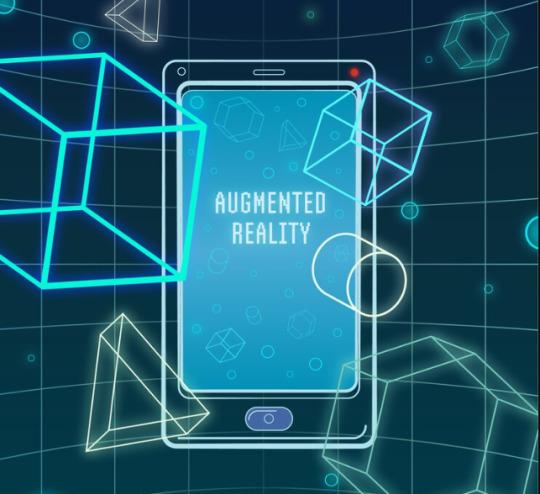
Why Physics Matter in AR Development
Traditional games use physics for added realism, but in AR, physics play an even more critical role—they're the connective tissue between the digital and physical worlds. When a virtual character walks on your real coffee table and respects its edges, or when a digital ball bounces with the right amount of energy, users instinctively accept these objects as part of their reality.
Good physics implementation in AR:
Creates a genuine sense of presence for virtual objects
Makes interactions feel intuitive and natural
Enhances engagement and immersion
Opens new possibilities for gameplay and utility applications
Getting Started with Unity Physics for AR
Setting Up Your Project
Before implementing physics, you need a properly configured AR project in Unity:
Start with Unity's AR template or add AR Foundation to an existing project
Set up your development environment for either ARKit (iOS) or ARCore (Android)
Ensure your scene has the basic AR components: AR Session and AR Session Origin
Unlike web or traditional mobile development, AR requires these special components to connect your virtual content with the real world through the device's camera and sensors.
Understanding Key Physics Components
Unity's physics system works through several components that you can add to objects through the Inspector panel:
Rigidbody: This component makes objects respond to gravity and forces. In AR, adding a Rigidbody to your virtual objects allows them to fall onto detected surfaces, roll down inclines, and collide with other objects.
Colliders: These invisible shapes define the physical boundaries of your objects. Unity offers several types:
Box Colliders: Great for rectangular objects
Sphere Colliders: Perfect for round objects
Capsule Colliders: Ideal for character controllers
Mesh Colliders: For complex shapes (use sparingly as they're performance-intensive)
Physics Materials: These determine how objects interact when they collide. By adjusting properties like:
Friction: How much objects resist sliding
Bounciness: How much objects rebound after collision
Friction Combine: How friction is calculated between materials
You can create everything from slippery ice effects to bouncy rubber balls without writing a line of code.
Creating Realistic AR Physics Interactions
Making Virtual Objects Respond to Gravity
The simplest physics interaction is having virtual objects respect gravity:
Add a Rigidbody component to your AR object through the Inspector
Ensure "Use Gravity" is checked
Adjust the Mass property to match the object's apparent weight
For initial placement, you can temporarily enable "Is Kinematic" until the object is positioned
When your app detects a surface and places the object, simply turn off "Is Kinematic," and the object will naturally fall onto the detected surface.
Working with Real-World Surfaces
Unity's AR Foundation automatically detects real-world surfaces like floors, tables, and walls. To make these surfaces interact with your virtual physics objects:
Enable Plane Detection in your AR Session Origin
In the Plane Manager component, create a prefab with a collider that will be generated for each detected surface
Make the visual component of these planes transparent if you don't want users to see the boundaries
Now when virtual objects fall, they'll stop at these detected surfaces instead of falling infinitely.
Creating Convincing Object-to-Object Interactions
For virtual objects to interact with each other:
Ensure each has both a Rigidbody and appropriate Collider
Adjust the physics materials to create the right "feel" for interactions
Consider the scale and mass of objects—a bowling ball should impact a set of pins differently than a marble would
Unity's physics engine will handle the complex calculations of how objects should bounce, roll, and collide with each other.
Enhancing Realism with Advanced Physics Techniques
Using Joints for Complex Interactions
Unity's physics joints allow you to create connections between objects:
Hinge Joints: Create doors that swing open in AR
Fixed Joints: Attach objects rigidly together
Spring Joints: Create elastic connections between objects
For example, you could create an AR game where a virtual character is attached to a balloon floating above them using a Spring Joint, creating a realistic bobbing motion as the character moves.
Implementing Force Fields and Gravity Zones
Create areas that affect physics in interesting ways:
Add empty GameObjects with sphere colliders set to "Is Trigger"
Create custom gravity wells or repulsion fields
Use the AR Foundation's raycast feature to place these fields in the real world
This allows for creative interactions, like virtual objects that float when placed in certain areas or get pulled toward specific points in space.
Simulating Different Materials and Environments
Unity's physics system allows you to simulate different environments:
Adjust the global gravity settings to simulate environments like the moon
Create physics materials with different properties to represent materials like ice, mud, or rubber
Combine these effects to create zones with unique properties
Your AR app could include a space where objects float as if in water, or a slippery surface where objects slide with minimal friction.
Optimizing Physics Performance in AR Development
Physics calculations are processor-intensive, and AR applications already demand significant resources. Here are ways to optimize:
Use simple colliders: Box and sphere colliders perform better than complex mesh colliders.
Implement physics LOD (Level of Detail): Objects farther from the camera can use simplified physics or none at all.
Limit active physics objects: Consider disabling physics for objects that aren't currently in view or interactive.
Use kinematic Rigidbodies for objects that need collisions but don't need to move freely.
Adjust Fixed Timestep in the Time settings to balance between physics accuracy and performance.
Troubleshooting Common AR Physics Issues
Objects Falling Through Surfaces
If objects fall through your detected planes:
Make sure colliders are properly sized
Check that the Rigidbody mass isn't too high
Ensure continuous collision detection is enabled for fast-moving objects
Jittery or Unstable Movement
If objects shake or move erratically:
Increase the Rigidbody's drag value
Enable interpolation on the Rigidbody
Check if colliders are overlapping at the start
Inconsistent Collision Detection
If collisions don't work consistently:
Verify collision layers are set up correctly
Ensure triggers and non-triggers are used appropriately
Check that collider scales match their visual representations
Platform-Specific Considerations
Different AR platforms offer varying physics capabilities:
ARKit (iOS) provides advanced scene understanding, which can enhance physics realism by detecting not just flat surfaces but also object boundaries and geometries.
ARCore (Android) offers depth API integration, allowing for more accurate physics interactions based on the distance of real objects.
When developing cross-platform, focus on physics features that work consistently across devices, then add platform-specific enhancements where available.
Real-World Applications
AR Games with Physics-Based Gameplay
Physics opens possibilities for engaging gameplay:
Angry Birds-style projectile games in real space
Virtual bowling on your actual floor
Marble runs that attach to real furniture
Educational AR with Natural Interactions
Physics can make educational content more engaging:
Solar system models where planets orbit with correct gravitational influence
Chemistry demonstrations where molecular structures assemble realistically
Physics lessons where principles can be demonstrated in the user's environment
Utility AR Applications
Practical applications benefit from realistic physics too:
Furniture placement apps where items settle naturally on the floor
Interior design tools where fabrics drape realistically
Architecture visualization where physical properties of materials are represented accurately
Conclusion
Implementing realistic physics in AR development transforms static experiences into dynamic, engaging interactions. Unity's physics engine provides all the tools you need—without requiring complex programming—to create immersive AR applications where digital and physical worlds blend seamlessly.
As you develop your AR experiences, remember that subtle physics details often make the biggest difference in perceived realism. The natural arc of a thrown object, the appropriate weight of a virtual item, or the satisfying interaction between elements—these details create the magic moments that make users forget they're looking at augmented reality at all.
By mastering Unity physics in your AR projects, you'll create experiences that don't just overlay digital content onto the real world but truly integrate with it in a natural, intuitive way—making your AR development stand out in an increasingly competitive field.
#gaming#mobile game development#game#metaverse#nft#multiplayer games#blockchain#unity game development#vr games
0 notes
Text
Searching for Flutter Coaching Classes Near Me? Learn App Development the Smart Way with Techmindz
In a world driven by mobile apps, one framework is changing the game: Flutter. Built by Google, Flutter has rapidly become the go-to tool for developing fast, beautiful, and cross-platform mobile apps with a single codebase. If you’ve been searching for “Flutter coaching classes near me”, your journey to becoming a professional app developer starts right here—at Techmindz.
Located in Kochi and offering both offline and online coaching options, Techmindz is one of Kerala’s most trusted IT training institutes for hands-on, job-ready Flutter development training.
Why Flutter? Why Now?
Whether it's startups or global tech giants, businesses want their apps to run smoothly on both Android and iOS without doubling the development cost—and Flutter delivers exactly that.
Top Reasons to Learn Flutter:
🧩 One Codebase, Two Platforms – Write once, deploy on Android and iOS.
⚡ Faster Development Cycles – Hot reload allows developers to see changes instantly.
🎨 Beautiful UI – Build stunning, customized user interfaces with ease.
💼 High Demand in the Job Market – Flutter developers are among the most sought-after in mobile development.
🌍 Strong Community and Support – Backed by Google and a global network of contributors.
Techmindz – Your Nearby Destination for Flutter Coaching
If you’re located in Kochi, Ernakulam, or anywhere in Kerala and looking for Flutter coaching classes near you, Techmindz offers a practical and structured course that’s perfect for students, professionals, and career changers.
💡 What You’ll Learn in Our Flutter Coaching Program:
Our expert-curated curriculum ensures you gain both theoretical knowledge and practical coding experience, covering topics like:
Introduction to Flutter & Dart
Dart Programming Language Basics
Widgets & UI Components
Navigation & Routing
State Management (Provider, Bloc, Riverpod)
API Integration & JSON Handling
Firebase Integration
App Deployment to Play Store & App Store
Building Real Projects from Scratch
We believe in learning by doing, and our program is filled with live coding sessions, hands-on projects, and peer collaboration.
Why Choose Techmindz for Flutter Training?
✅ 1. Expert Trainers from the Industry
Learn from developers who’ve built and deployed real Flutter apps. They bring industry insights, coding best practices, and live problem-solving into the classroom.
✅ 2. Project-Based Learning
You'll build fully functional mobile applications during the course—such as task managers, shopping apps, or chat apps—that can be showcased in your portfolio.
✅ 3. Placement Support
We don’t just train—you get career-ready. Our placement support includes:
Resume building
Mock interviews
Technical assessments
Placement drives with top IT firms
✅ 4. Flexible Class Timings
We offer weekday and weekend batches, online coaching, and offline classes at our Kochi center—ideal for students, working professionals, and freelancers.
✅ 5. Certification and Skill Validation
Upon successful completion, you receive a Techmindz course certification recognized by leading tech companies.
Who Can Join?
Our Flutter coaching classes are open to:
B.Tech, BCA, MCA students
IT professionals upskilling in mobile development
Web developers looking to branch into mobile apps
Entrepreneurs wanting to build their own apps
Anyone with basic programming knowledge and a passion for app development
You don’t need a background in mobile development—we teach from the ground up.
Career Opportunities After the Course
Once you complete our Flutter training, you’ll be eligible for roles like:
Flutter Developer
Mobile App Developer
UI/UX Mobile Developer
Freelance App Developer
Cross-Platform Developer
With Flutter gaining massive traction, your skills will be in high demand—locally and globally.
Final Thoughts
If you’re searching for Flutter coaching classes near me, look no further than Techmindz. Our goal is to transform passionate learners into confident mobile app developers through expert guidance, hands-on practice, and real-world project experience.
🚀 Start building beautiful, powerful mobile apps with Flutter. Join Techmindz today and turn your code into a career.
https://www.techmindz.com/flutter-training/
0 notes
Text
How to Build a Taxi App Like Uber: Essential Features, Tech Stack & Development Cost in 2024
In today's fast-paced world, ride-hailing apps like Uber have revolutionized the transportation industry. If you're considering developing a similar app, it's crucial to understand the essential features, technology stack, and associated costs. This guide provides a comprehensive overview to help you embark on your journey.
Essential Features of a Taxi App Like Uber
To create a successful taxi booking app, integrating the following features is vital:
1. User App Features
User Registration & Profile Management: Allow users to create and manage their profiles.
Ride Booking & Scheduling: Enable users to book rides instantly or schedule for later.
Fare Estimation: Provide users with an estimated fare before confirming the ride.
Real-Time GPS Tracking: Allow users to track their rides in real-time.
Multiple Payment Options: Integrate various payment gateways for user convenience.
Ride History & Ratings: Let users view past rides and rate drivers.
2. Driver App Features
Driver Registration & Profile Management: Facilitate driver onboarding and profile updates.
Ride Notifications: Notify drivers of incoming ride requests.
Navigation & Route Optimization: Provide optimal routes for drivers.
Earnings Dashboard: Allow drivers to track their earnings and trip details.
Ride History & Ratings: Enable drivers to view past rides and ratings.
3. Admin Panel Features
User & Driver Management: Monitor and manage users and drivers.
Ride Management: Oversee all ride activities.
Fare Management: Set and adjust fare structures.
Analytics & Reporting: Generate reports for business insights.
Push Notifications: Send updates and promotions to users and drivers.
Choosing the Right Technology Stack
Selecting an appropriate tech stack is crucial for the app's performance and scalability:
Frontend Development:
iOS: Swift
Android: Kotlin
Cross-Platform: React Native or Flutter
Backend Development:
Languages: Node.js, Python, Ruby
Frameworks: Express.js, Django, Ruby on Rails
Database: PostgreSQL, MongoDB
Real-Time Communication: Socket.io, Firebase
Third-Party Integrations:
Maps: Google Maps API, Mapbox
Payment Gateways: Stripe, PayPal, Razorpay
Push Notifications: Firebase Cloud Messaging
Development Cost in 2024
The cost to develop a taxi app like Uber varies based on features, complexity, and development location:
Basic App: $20,000 - $50,000
Advanced App with AI Features: $75,000+
Maintenance Costs: 15-20% of development costs annually
Factors influencing costs include:
Feature Set: More features increase development time and cost.
Development Team Location: Teams in different regions have varying hourly rates.
Platform Choice: Developing for multiple platforms (iOS, Android) increases costs.
Steps to Build a Taxi App Like Uber
Market Research: Understand your target audience and competitors.
Feature Planning: Decide on the essential features for your app.
Choose a Development Approach: Opt for native or cross-platform development.
Design UI/UX: Create intuitive and user-friendly designs.
Develop the App: Build the frontend and backend components.
Testing: Conduct thorough testing to ensure app functionality.
Launch: Deploy the app on app stores.
Post-Launch Support: Provide ongoing maintenance and updates.
Conclusion
Building a taxi app like Uber requires a strategic approach, from identifying essential features and selecting the right tech stack to estimating a realistic development budget. Whether you're a startup or an established transportation business, having a clear roadmap and the right development partner can significantly boost your chances of success. If you’re ready to take the next step in launching your own ride-hailing platform and want expert guidance every step of the way, contact us at Intelegain Technologies. With years of experience in building scalable, user-centric mobile applications, our team can help turn your taxi booking app vision into a market-ready product.
0 notes